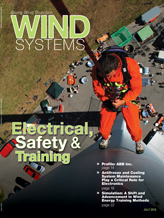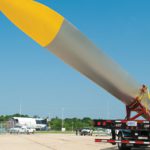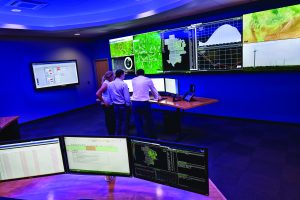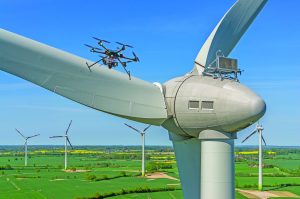Wind farm owners are doing their best to control spending, and, unfortunately, safety issues can be unintentionally overlooked, exposing contract workers and the wind farm itself to potential danger.

One such example is the practice of allowing the contractor to operate the turbine for “lock-out/tag-out” without spending the necessary time to train and document the training of the contractor on your sites and in your expected operating processes. The reason this is happening is due to manpower shortages and the industry overall not being as aware or vigilant as it should be of the potential risks. A shortcut like this is dangerous. Although the contractor technicians are more than willing to expand their knowledge to operate the turbines, their knowledge most likely is not at the same depth as that of the wind turbine technicians on-site. To ensure turbine safety, qualified and trained technicians should do the lock-out/tag-out procedure on these powerful electrical machines. To be qualified, one should be familiar with the equipment at hand. With that knowledge, they will most likely know what could go wrong and what to do if that happens. This is where the training needs to come in on each site. For example, I consider myself an electrically savvy member of the wind energy industry. However, I know that I am not qualified to go into most turbine controllers and manipulate them. I do not have the proper training. Therefore, I do not venture into areas on a wind farm or in the turbine itself that I feel are unsafe.
Some contractors do not understand the potential danger they are exposed to when it comes to the electrical side of wind turbine operations. They may underestimate the danger and overestimate their skills and knowledge. Being unaware of the turbine-specific dangers is the problem, and that could be life-threatening. Unfortunately, the site personnel rarely go out and train their workers to ensure that the contractors are implementing the correct process. This should be the contractor’s priority because it is better to review something that everyone already knows than to let someone out on a wind site who hasn’t been properly trained. I have found that the contractor is sometimes interviewed and that the working technicians’ safety certifications are looked at to make sure these items are current, but the contractor is rarely trained on the lock-out/tag-out protocols specific for each site.
Some sites require that the contractor technicians take a NFPA 70E-qualified electrician course to make them eligible to perform electrical processes related to the turbine shutdown and lock-out. However, an online course on NFPA 70E electrical safety may not adequately train and qualify them to perform such potentially dangerous tasks as opening an electrical cabinet with exposed conductors behind it on a turbine. The technician needs turbine-specific and task-specific training to be safe while working on these turbines.

It is necessary to take the time to handle turbine operations with a qualified team and have the contractor lock out and tag out on top or in parallel, or you should build an adequate contractor training system that the contractor takes on the wind farm site. It may be as easy as having a savvy contractor work with you on a few turbines and follow your process, or it could be much more complicated. Either way, it’s necessary. It may even be beneficial to always maintain operational control and lock out in parallel with the contractor. When it comes to the sub-contractors, I prefer that the site lock the turbine out and have my technicians lock and tag on top or in parallel. It is the safest option for all involved. For some turbines, lock-out/tag-out requires people to open control cabinets that have potentially dangerous electrical hazards. On these sites, extra personal protective equipment is required that includes fire-resistant clothing, a face shield, hearing protection, and electrically rated gloves.
In my experience, many technicians do not use proper hearing protection with their arc flash protective gear, and it can be a challenge to have them wear the proper gloves and face shields unless they have experienced an arch flash event. As you can imagine, a subcontractor blade repair technician is not as proficient in the use of safety gear as the site technician should be. Safety professionals in wind have done an exemplary job of ensuring that they are properly geared and trained to perform the work they do at such great heights. Everyone understands the danger of heights intuitively, but the dangers of the turbine control system and its associated electrical components are not as readily visible until there is an accident. Those electrical dangers are growing as the turbines age, and the wind industry needs to be vigilant when it comes to electrical safety for everyone.
For more information, go to www.frontierpro.com.




































